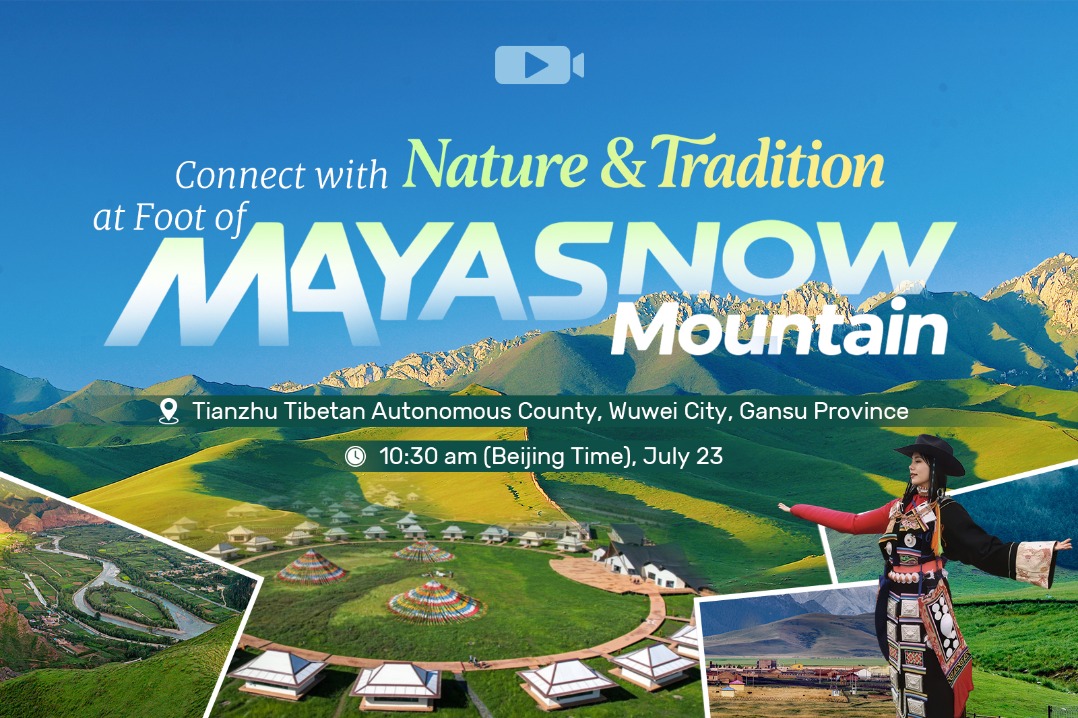Chinese, Turkish experts plan to explore Neolithic sites

SANLIURFA, Turkiye — Chinese and Turkish experts are showing interest in collaborating on archaeological research at one of the world's oldest Neolithic sites, located in southeastern Turkiye.
Archaeologists from both nations gathered at the first World Neolithic Congress, held in Sanliurfa from Nov 4 to 8, to discuss various aspects of archaeological research on the Neolithic Age.
Nearly 1,000 scholars from 63 countries took part in the event, which took place in a region that harbors globally recognized Neolithic sites such as Gobekli Tepe and Karahan Tepe. The region, steeped in history, has long played a crucial role in uncovering the mysteries of the Neolithic period, a transformative era that laid the foundation for human civilization over the past 12,000 years.
The two sites are part of the greater "Tas Tepeler" or "Stone Hills" region, where archaeologists have uncovered monumental statues and architectural elements, shedding light on the dawn of human civilization.
"We are planning a new cooperation with Chinese colleagues in the future on the Tas Tepeler Project," said Necmi Karul, the Turkish archaeologist leading excavations in the region.
He said that some 20 Chinese archaeologists participated in the congress and hailed the spirit of scientific cooperation showcased during the discussions.
Topics explored included bioarchaeology, dating methods, physical anthropology, and geoarchaeology.
One of the Chinese experts, Wang Fen, from Shandong University, said she was amazed by the Gobekli Tepe site, which, she said, may "challenge our historical cognition".
She emphasized the value of cross-cultural communication in archaeological research and highlighted the "great prospect and space for cooperation" between China and Turkiye in Neolithic archaeology.
In recent decades, archaeologists working across this Turkish region have discovered over 20 sites from the Pre-Pottery Neolithic period. These sites often feature monumental architecture, including T-shaped or rounded pillars, large decorated stone benches and intricate carvings of humans and animals.
Benefits of cooperation
Liu Xinyi, an associate professor and deputy director of the Department of Anthropology at Washington University in St. Louis, emphasized that significant Neolithic sites discovered in eastern Anatolia have consistently benefited from international collaboration.
"The advantage of international cooperation is that, on the one hand, the methods are different, and everyone is good at different things", he said, emphasizing the need for international interdisciplinary cooperation.
In his view, scholars living and growing up in different cultural backgrounds can provide more diverse findings.
Gobekli Tepe, a UNESCO World Heritage site overlooking the Mesopotamian plateau, has intrigued researchers since its excavation in the 1990s. Though widely thought to be a ritual site built by hunter-gatherers, its exact purpose remains debated.
In 2023, a painted wild boar statue was uncovered, revealing the use of pigments in prehistoric art and highlighting the artistic sophistication of Gobekli Tepe's builders.
Xinhua
Today's Top News
- Tourists flock to locations featured in hot TV shows
- Intl volunteers serve as bridge linking Jingdezhen, world
- Global investors more bullish on Chinese assets
- Advanced weapon systems make debut
- Authority suspends antitrust investigation against DuPont
- Playing its appointed part in US' strategy will not bring Manila its desired rewards






























